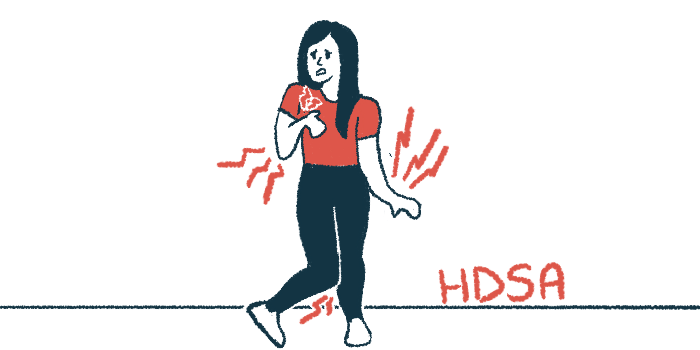Establishing exercise routines and getting support from care partners can help people with Huntington’s disease stay active and maintain their mobility and function.
In the past decade, new research on the effects of exercise has shown conclusively that aerobic exercise can help patients improve their fitness and motor function, and one-on-one training with a physical therapist can improve their walking abilities. There’s also evidence that strength training “with weights, whatever individualized exercises, including balance, are also something that can be helpful,” said Deborah Kegelmeyer, a physical therapist at Ohio State University, who spoke about the benefits of exercise at the recent Huntington’s Disease Society of America (HDSA) convention.
It’s recommended that people with Huntington’s regularly do moderate intensity aerobic exercise, which means “you’re working hard enough that it’s a little bit hard to talk, but not so hard that you can’t get out a sentence … but definitely getting your heart rate and your breathing up,” said Kegelmeyer, who’s also a consultant at the university’s HDSA center of excellence.
In a research setting, aerobic exercise usually involves riding a stationary bike, but in daily life there are many ways to get moving that are fun and engaging, from hiking to sports to dance. Kegelmeyer recalled helping one patient find ways to be active while playing a card game.
“I always tell my patients, tell me what you like. We can make anything work,” she said.
Scheduling opportunities, making changes
Making a schedule for exercise and doing it with another person or a number of people so everyone can help another remain accountable is also recommended. “When anybody has a partner, some type of a care partner that’s asking how they’re doing with the exercise or doing it with them … they’re more likely to continue with that program,” Kegelmeyer said.
In order to make exercise a habit, research shows patients should try to stick with it for at least three months. After sticking with it that long, “you’ll probably find that you’ve gotten into the habit of it, that you’ve started to enjoy it and see the benefits, and so you’d be more likely to keep it up,” Kegelmeyer said.
And those regimens will change as the disease progresses, said Angelina Ciavarella, a neurological physical therapist at Oregon Health and Science University, who also addressed the conference.
“I think a common misconception with [Huntington’s disease] is that people can’t make changes or improvements, and that’s absolutely not true, especially in those early- or mid-stages” of the disease, said Ciavarella, who emphasized that every person’s body is different, so what constitutes enough exercise is going to vary from person to person and over time. Physical therapists can help patients find a suitable exercise regime for their specific situation, she said.
When starting an exercise regime in the early stages of Huntington’s, the goal is to establish a routine so that exercise becomes just another part of day-to-day life. “Before symptom onset or early in symptom onset, the main goal of your exercise program is to establish a program to develop those habits,” Ciavarella said. “The big goal is to start early, try not to wait until a problem arises. Really use exercise as a way of prevention.”
Early, middle, and late-disease goals
In early Huntington’s, patients can usually exercise on their own, but exercising in a group is often more fun and engaging, Ciavarella said. As the disease progresses into its middle stage, patients may “start to need some assistance or help with exercise, so knowing how to adapt is important,” she said.
People with balance problems might want to find forms of exercise they can do while seated, such as using a recumbent bike or lifting weights.
“Practicing standing up and sitting down is a great task to do to help strengthen your body, and it’s also very functional,” said Ciavarella, who also emphasized how much having other people present can help. “Independent exercise is still OK if it’s going well for you, but guided exercise might be necessary at this point and also might be a lot more motivating and engaging,” she said.
As patients move into the late stages of Huntington’s, goals of exercising include preserving independence as much as possible and maintaining muscle strength to do daily activities.
Ciavarella said physical therapists and other rehab professionals can be invaluable for helping late-stage patients find ways to safely be active with support from care partners.
Regardless of the disease stage, it’s never too late for people with Huntington’s to start getting more active, but it’s important to be realistic in setting expectations, said Ciavarella, who advised patients to start with small, achievable goals and then celebrate when those goals are met.
“Give yourself kudos. You deserve it. If you’ve been keeping track of your progress and you’re being consistent, have a way to celebrate that,” she said.
Note: The Huntington’s Disease News Today team is providing virtual coverage of the Annual Huntington’s Disease Society of America Convention (HDSA) May 30-June 1. Go here to see the latest stories from the conference.

